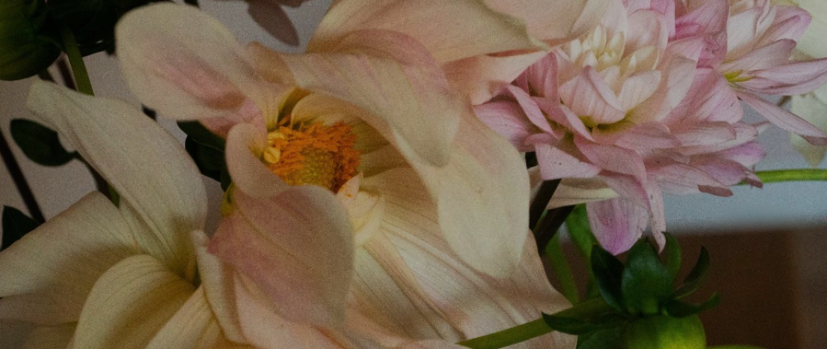Floral Sustainability: Nurturing A Greener Future
The floral industry has long been a symbol of beauty and romance, with the gifting and decoration of flowers being a cherished tradition worldwide. However, beneath the stunning blooms lies an underbelly of environmental concerns that need addressing. In our journey to a more sustainable future, even the floral sector plays a pivotal role. Here, we delve into the importance of sustainable practices within this industry and guide consumers in making environmentally conscious choices when indulging in floral delights.
For those in Montreal seeking to embrace sustainability without compromising on the beauty of blooms, consider opting for the best flower delivery in Montreal. Choosing a service that prioritizes eco-friendly practices ensures that your floral gestures contribute to a greener and more sustainable floral industry.
Eco-Friendly Blooms: Sustainable Sourcing And Packaging
A vast majority of the world’s flowers are traded internationally, clocking thousands of air miles before reaching your vase. The carbon footprint of this process, coupled with the excessive use of plastics and pesticides, has a significant impact on the environment.
To combat these concerns, an emphasis on sustainable sourcing practices is paramount. This includes supporting local growers. When consumers choose local flowers, they are not only supporting their community but are also significantly reducing the carbon footprint associated with transportation. Moreover, local flowers often have a fresher fragrance and a longer vase life due to reduced transit times.
A growing trend in the industry is also the reduction of plastic packaging. Eco-conscious florists are opting for biodegradable wrappings, recycled papers, and even fabric wraps. This movement away from single-use plastics is a testament to the changing mindset of both producers and consumers, and it’s a trend that we should wholeheartedly support.
Additionally, the push for sustainable practices extends to the fields and farms where flowers grow. Many farmers are now transitioning to organic farming methods, eschewing harmful pesticides in favor of natural alternatives that are kinder to the environment and local ecosystems. These eco-friendly farming techniques not only ensure healthier soils and watersheds but also produce blooms that are safer for consumers, and devoid of harmful chemical residues. In essence, when we support sustainable floristry, we’re endorsing a healthier planet and a safer environment for all.
Flowers That Give Back: Charitable Initiatives In The Floral World
Beyond the allure of their beauty, flowers have the power to heal, comfort, and uplift. Recognizing this, many florists and organizations have embarked on charitable endeavors, turning flowers into agents of change.
Several initiatives are seeing florists donate unsold flowers to hospitals, nursing homes, and charities. These gestures, though seemingly small, have a profound impact. For patients in hospitals or residents of nursing homes, a bouquet of vibrant flowers can serve as a beacon of hope and a source of emotional healing. Moreover, some organizations are repurposing wedding and event flowers, giving them a second life by distributing them to those who could use a dose of cheer.
By supporting florists and organizations that prioritize such benevolent practices, consumers can ensure that the joy of flowers reaches even the most vulnerable among us.
Furthermore, the act of recycling and redistributing flowers reduces waste, aligning with broader sustainability goals. In many instances, flowers that aren’t repurposed often end up in landfills, contributing to environmental degradation. By redirecting them to those in need, we are not only bringing smiles but also ensuring a more sustainable utilization of resources. Through these compassionate gestures, the floral industry exemplifies how businesses can intertwine profit with purpose, fostering a culture of giving that resonates with modern consumers.
DIY Sustainability: Growing Your Own Flowers And Herbs
If you’re seeking a hands-on approach to sustainability, look no further than your own backyard or balcony. Growing your own flowers and herbs not only reduces the environmental impact associated with transport and packaging but also offers a therapeutic hobby.
To Cultivate A Sustainable Garden:
Choose native species: These plants are adapted to local conditions and often require less water and care.
Avoid chemical pesticides: Opt for natural alternatives or beneficial insects like ladybugs.
Practice composting: Transform kitchen scraps into nutrient-rich compost to feed your plants.
Harvest responsibly: When cutting flowers for arrangements, ensure you’re not hindering the plant’s growth.
Once your garden is in bloom, you can revel in the satisfaction of creating floral arrangements with homegrown flowers. The personal touch and the story behind each blossom make these bouquets even more special.
Engaging in such sustainable practices not only benefits the environment but also provides a profound sense of connection to the Earth. There’s an undeniable joy in watching a seed transform into a blooming marvel, knowing it’s the fruit of one’s own labor.
Additionally, growing your own flowers can be a wonderful educational experience for children, teaching them about the importance of sustainability and the intricacies of plant life. In essence, cultivating your own garden is not just an eco-friendly endeavor; it’s a holistic experience that nurtures the soul, educates the mind, and fosters a deeper bond with nature.
Conclusion
The path to a greener future requires us to reconsider even our most cherished traditions, like gifting flowers. By prioritizing sustainability in the floral industry, we’re not only preserving the intrinsic beauty of nature but also fostering a brighter future for local communities. As consumers, our choices hold power. Let’s pledge to make choices that bring us a step closer to a world where nature flourishes, and the essence of flowers remains untainted by environmental concerns.








